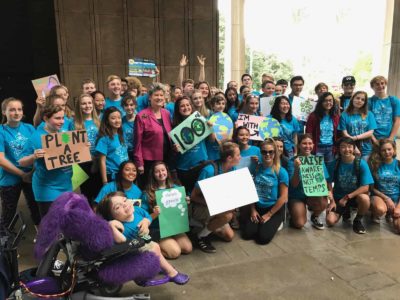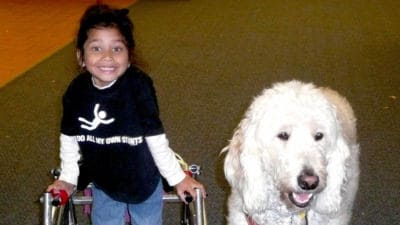
Parents of students with disabilities often lament that once their child finished high school, the absence of routine and structure was a shock to the family’s system. Setting up services can be overwhelming and time-consuming, and understandably, many families put it off. What many parents don’t know is that planning for the transition from high school to adulthood can—and should—start much earlier than the student’s senior year. Parents and teachers who coordinate transition planning with resources outside the school system will ensure a successful transition process.
Transition services coordinated by your school
The Individuals with Disabilities in Education Act (IDEA) mandates that students with an Individualized Education Program (IEP) be provided with “transition services.” These services must be provided to aid students in acquiring social and independent living skills and to prepare them to enter employment or postsecondary education after graduation.
Simply put, transition services are services to prepare students for life after high school. Students are entitled to receive services until graduating from high school or reaching the age of 22, whichever occurs first. (A future article will address transition services required by the Workforce Innovation and Opportunity Act, which makes transition services available to youth with disabilities who do not have an IEP or who may no longer be in school.)
Our experience has shown us that IEP teams that actively begin the transition process at the earliest moment possible have more success. Teams that delay transition activities until the final year of high school often find themselves struggling to design a meaningful, predictable day for the individual that does not rely on parents or guardians for transportation and care.
Critical moments
Age 14: Beginning with the first IEP that will be in effect when the student turns 14, the IEP must include a statement of transition needs to achieve the student’s vision for life after high school. The student’s goals, preferences, interests, and course(s) of study (such as advanced placement classes or a vocational education program) drive this process. At this age, the transition plan may be nothing more than a statement of goals and needs unless the IEP team agrees to begin working on the transition plan immediately.
Age 16: Beginning with the first IEP that will be in effect when the student turns 16, the IEP must include appropriate, measurable postsecondary goals. The IEP also may include obtaining age-appropriate assessments to identify the skills and training the student needs to achieve their goals. To ensure that these goals are real and measurable, the IEP must identify the services needed and must identify any agencies outside the school system that must be involved to realize the student’s goals.
Who’s on the team?
Until the age of 14, the school and parents are the undisputed “experts” at the table regarding the student’s special education services. However, the transition planning process requires individuals who are experts in the services, skills, and education required for the job the student wants – expertise that is not typically found within the school system staff or parents. As a member of the IEP team, you may invite anyone who can help with the student’s transition planning to the meeting, such as the student’s care coordinator or other staff from the LME/MCO, a representative from Vocational Rehabilitation, or anyone else invested in assisting the student in achieving their goals for life after high school. If for some reason the student cannot attend the meeting, the school system must take other steps to ensure that the student’s preferences and interests are considered.
Vocational Rehabilitation
Vocational Rehabilitation (VR) is a state agency that provides free services to assist people with disabilities in obtaining employment, and is often a critical partner in the transition process. Students with an IEP or who receive SSI/SSDI are almost always eligible for VR services. Many school systems have a VR counselor “embedded” in the school system, but the relationship between each VR office and school system and how services are delivered is unique. Students who receive employment services through VR will complete an Individualized Plan for Employment (IPE), which will include a statement of career goals and specify the services or education needed to reach their goals. To ensure a smooth transition process, students should complete an IPE before the end of their high school career.
The first step in accessing VR services is the referral – a request – for services. As part of the transition IEP meeting, students or their parent/guardian may sign a VR Application/Agreement of Understanding, which is to be treated as an automatic referral for services. Many IEP teams will be misinformed that “students don’t meet with VR until their senior year.” While this may be a custom or practice in an individual school system, any student with a disability that may impair their ability to work may apply for VR services as early as age 14. Students do not have to wait until the school refers them for VR services; any student, parent, or guardian may contact their local VR office directly and ask to begin the application process.
Subminimum wages and sheltered work
The goal of transition planning is to achieve the fullest integration possible of young adults with disabilities into our communities. The transition planning process should not include discussions about subminimum wages, sheltered work, or other segregated services as the transition goal. Students have a right to competitive, integrated employment as well as community-based, non-work activities. Schools or providers that encourage students to consider a transition goal that would result in the student spending the majority of his or her day with other individuals with disabilities and their service providers should be brought to the attention of the federal Office of Civil Rights for the Department of Education, the federal Department of Justice, or Disability Rights NC.
If you would like additional resources about the nuts and bolts of transition planning, consult the Center for Parent Information and Resources transitions web resources. Another resource for students and parents wishing to take charge of transition planning is the Beyond High School transition curriculum available from the Northeast ADA Center.
If you believe a transition-age student is in need of advocacy services, contact Disability Rights NC at 877-235-4210.
Recommended reading


